We had a lot of feedback on Tuesday’s post on the CSRG Chauchat light machine gun, so I figured I should do a bit of followup today. Leszek in Poland sent us these photos of a Chauchat captured by the Germans and converted to 8×57 caliber:
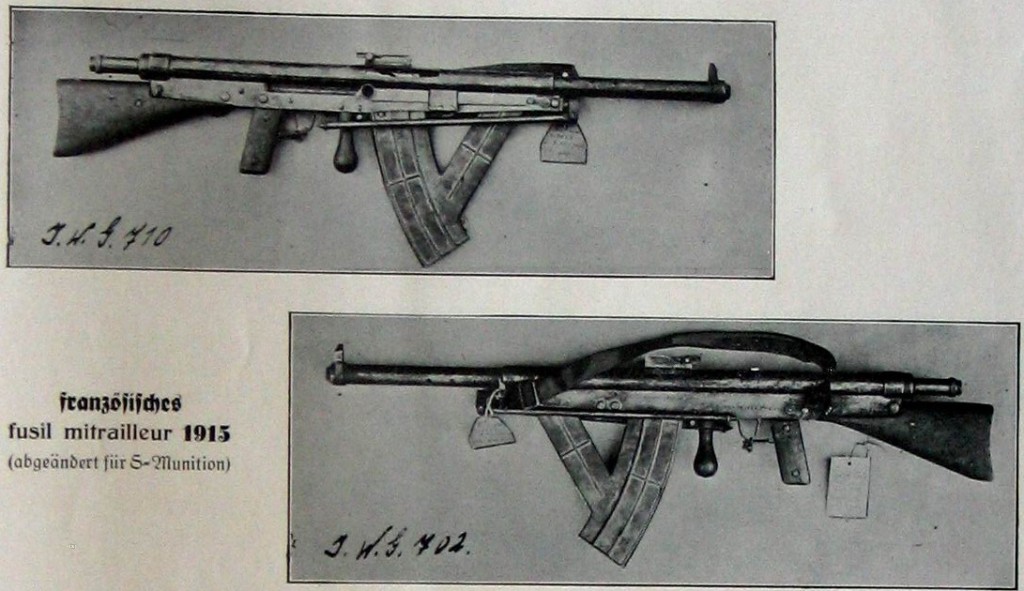
The magazine is of particular interest here – a mostly-straight mag was necessary for the Mauser cartridge, but the magazine catch on the gun was designed for the half-moon Lebel magazine. So the German solution was to add that front brace or extension to the magazine, so that it could use the gun’s existing catches.
Leszek also sent us these to photos of what seems to be a Chauchat designed for aerial use, with a top-mounted magazine. We have no other information on this particular pieces, though. FWIW, both sets of photos came from a German booklet published by the Reichswehr IWG in 1926, entitled “Maschinengewehr-Entwicklung”. If anyone happens to know where we might find a copy of it for our library, we would love to hear from you!
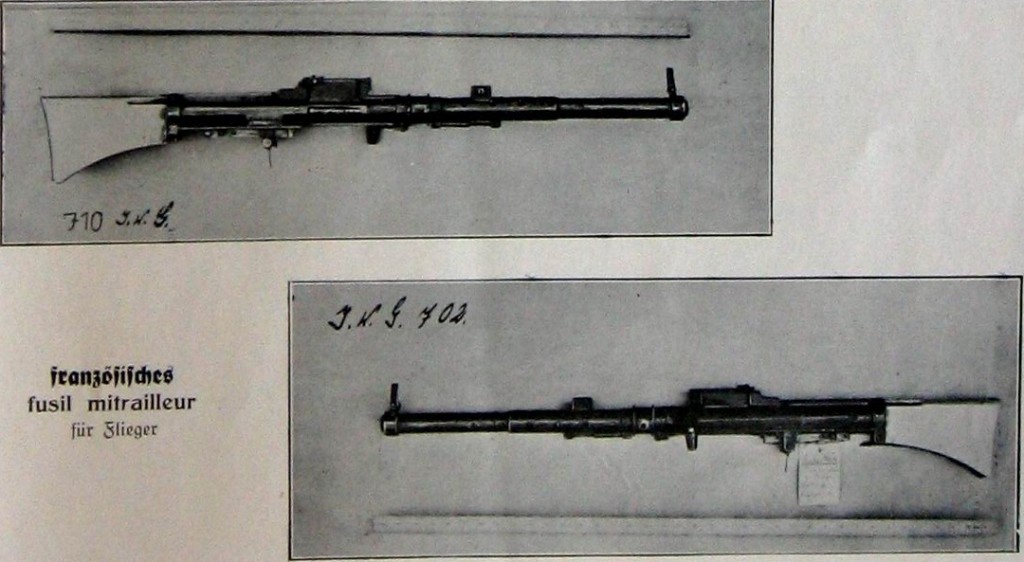
We also got a brief video from another friend of the site showing a standard M1915 Chauchat in use. Although short, the video does a good job of showing the gun’s rate of fire and general operation. You can see the open magazine design that caused so much trouble, and see how the heavy reciprocating bolt and carrier cause the gun to bounce as it fires.

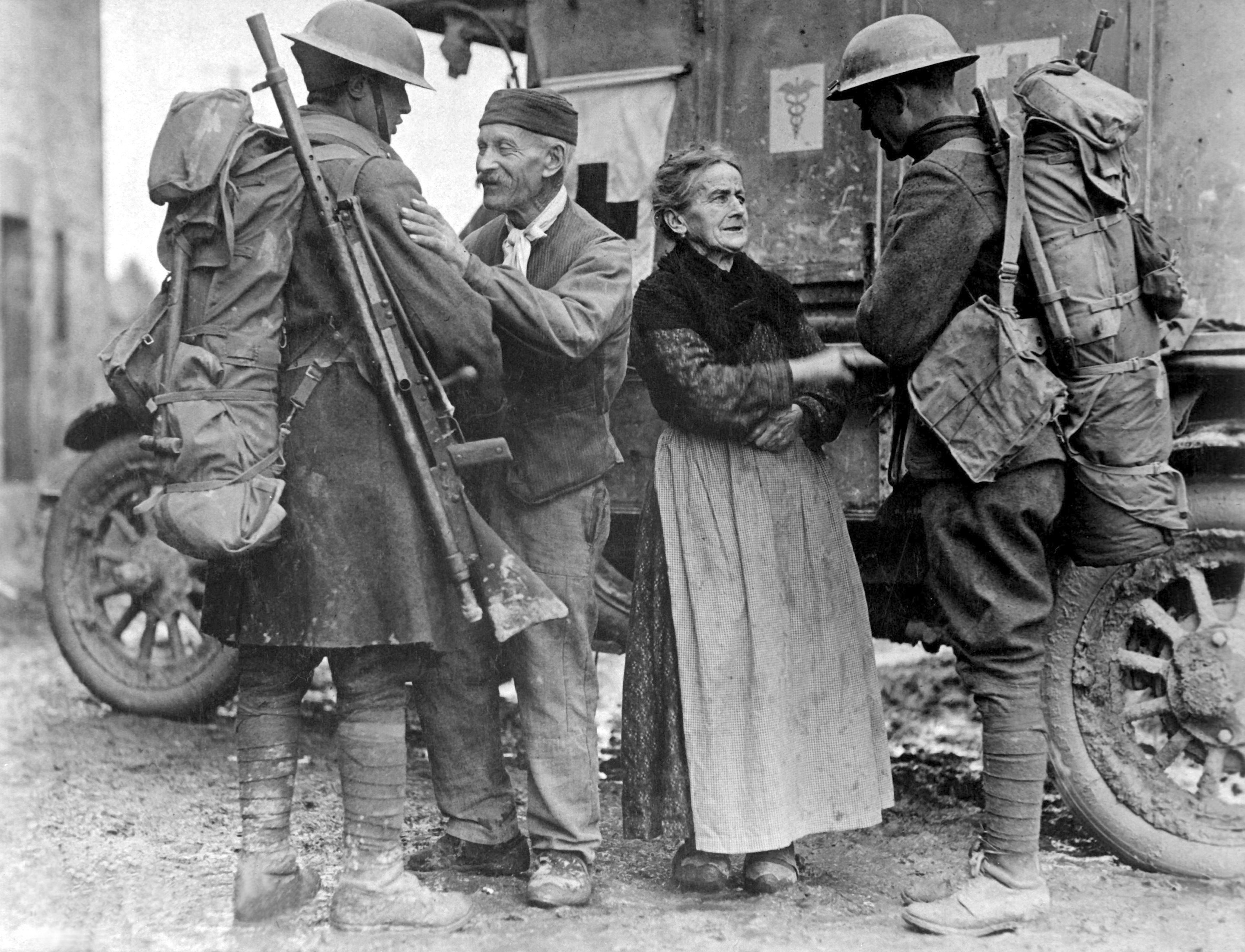
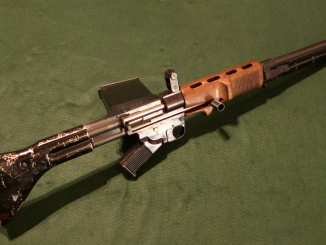
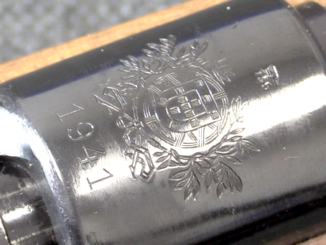
IMHO, they’d better make kind of converter on the gun and use conventional shape mags. Imagine how uncomfortable is to carry such Y shaped spare mags.
Hello everyone,
The aerial Chauchat was the FM CRDG Mle 1913, a forerunner of the FM CRDG Mle 1915, we all know. These were used as aerial guns, see a photo of Farman(?) if memory serves me well airplane in Collector Grade title ‘Honor Bound’. These were considered lost for ever (ca. 100 were ever manufactured) until not just one, but TWO were found in Czech military museum – even though lacking top attached magazines. The FM Mle 1915 magazines do not fit the latches on the Mle 1913.
These German photos show an incomplete gun, lacking aluminum pistol grip – perhaps this is a crash-site gun, recovered from shot down French airplane.
Correction – the airplane in queston was a Morane-Saulnier biplane, see page 25, Honor Bound by Jean Huon
more a fast semi auto, with what looks like quite a powerful cartridge! which part could kick the gunner? i don’t see any moving parts outside the gun.
It is the back end of the receiver tube that will kick you. It doesn’t move, but the impulse from the recoiling bolt and carrier will smack the contours into your cheek hard enough to bruise, or so I’m told. Keep your face up farther on the gun, and you don’t have a problem.
It’s possible the German-book Mle 1913 was a fixed gun and so mightn’t have had a pistol grip. In that case it was probably from a Farman or other pusher a/c as synchronization didn’t get sorted out until 1915-16. There are some good technical reports on WWI weapons development by Achim Engels and his friends at Fokker-Team Schöndorf. They remanufacture WWI fighter aircraft using, to the extent feasible, the original tools, materials and industrial processes. Achim’s goal is to have a living-history Fokker factory.
One would think that an aerial gun would want a much higher rate of fire than the infantry gun in the picture, but of course, the magazine-fed nature is a limitation, and also of course, we don’t know from a still picture what the ROF of the aerial variant was.
You cannot read any WWI pilot or observer’s memoir without reading of weapons jams and of the pains and efforts — and even superstitious rituals — to which aviators went to try to ameliorate them. One thing that was not understood was the effects of acceleration forces on ammo feeding devices. In a level turn at 60º bank you are pulling 2g and so, if your feed mechanism is oriented vertically it needs to have more than 100% extra margin of strength. (This also limits belt length).
Back to the ground CSRG in the video: what does he mean about, “as many rounds as possible”? Limited supply of 8mm? Mag needs a loader or is very hard to load? Mag is unreliable when fully loaded?
Also, the weapon’s very bad reputation came in part from the US .30 version, which had a straight mag and a different mag well and catch arrangement. Not reliable at all.
Long-recoil actions are not well suited for accurate point auto fire but didn’t MG theory at the time place a lot of store in dispersion? You sure get that!
Duh. I see this post is an extension of an earlier one where Ian aired the problems with the US Caliber .30 gun.
I have read several works that suggest that US forces had BARs taken away and CSRG’s provided, and that’s certainly another source of the bad rep of the French gun.
(interesting: usually a simpler weapon is a better weapon. The BAR is quite complex, but extremely reliable. The CSRG is much simpler, and much easier to manufacture). The French were surprisingly visionary, with a semi-auto rifle (Mle 1918 St Etienne) and stamped and screw-machine guns (the CSRG and much better Darne) years ahead of anyone else.
I consider the BAR stories apocryphal. The US entered the war with hardly any machine guns. Even though the greatest MG inventors of the era were Americans, they had all had to go overseas to find quantity buyers for their designs up to that point. I doubt that there were ever enough M1918 BARs to outfit the AEF, and would wager logistics drove the substitution of Chauchats. But there has to be definitive documentation somewhere.
it would not make much sense to remove the pistol grip, but leave the buttstock on the gun. (if you are mounting in in a plane, that servers no purpose annymore?)
It’s hard to say what circumstances led to the photo, as the gun had been captured by Germans. There are two photos of top-mag CS rifles mounted on aircraft in Demaison’ and Buffetaut’s “Honor Bound” and they both show buttstocks and pistol grips on the guns.
Are you sure that it’s a German 8mm conversion? The Poles supposedly converted A LOT of CSRGs to 8×57 in the 1920s and used them against the Soviets.
The mag on the CSRG altered for 7.92×54 looks awfully crude, and not like what you would expect from either German or Polish workmanship. (If you’ve seen a pre-war Radom pistol or Mauser, or a Vz. 63 PDW for that matter, you know what I mean about Polish workmanship, it’s world-class).
Perhaps it was somewhat jury-rigged so that the Germans could test the gun with readily available ammunition. But I wonder what book Leszek found these images in… it’s clearly an pre-45 German book (German text, Fraktur type) but that doesn’t automagically mean it’s a German gun.
I was probably wrong about the thing being used as a fixed gun. I don’t think I’d want to sign the engineering drawings on a synchronizing gear mechanism for this weapon; any long-recoil mechanism is not going to take inflight g variability well.
And then we have WWI quality control on ammo. I just doubt it would be
The book is from 1926, FWIW. The two pictures on aircraft in Honor Bound show the guns either on an upper-wing mount or on an observer’s flexible mount. I don’t think they would have tried to synchronize them because of the open-bolt firing, much less the long recoil action.
Sure, you can synchronize an open-bolt gun. Just means that the cam has to account for the longer lock time — as long as the lock time is consistent.
Before synchronization, some WWI aircraft were designed as pushers, like the DH2 and FE2 (in early RFC nomenclature “Farman Experimental” meant any pusher, and Bleriot Experimental any tractor airplane), some guns were mounted outside the propeller arc, and French ace Roland Garros actually had steel wedges bolted to the rear face of his propeller blades, to direct bullets away from the wooden prop. This made him. briefly, uniquely deadly on the Western Front but the vibrations ultimately shattered his prop and he glided down into German captivity. The German command ordered the innovation be copied, but Antony Fokker sneered at the crudity of it and developed an interrupter gear that was used in his Eindecker (monoplane).
The main British interrupter gear was the Constantinesco gear. George Constantinesco was born in Romania Constantinescu and his patents are in an anglicized nickname, Gogu Constantinesco. This is his hydraulic trigger/interrupter mechanism (he has a lot of British patents in hydraulics, pumps and whatnot; in romania he was best known as an architect).
http://www.google.com/patents/US1372944?printsec=abstract#v=onepage&q&f=false
I have some bad news about Achim Engels. His maniacal pursuit of perfection in reproducing 1910s machinery seems to be at an end. In this forum post he throws in the sponge. Achim didn’t build guns but he built the airplanes they flew in, and he knows them well:
http://www.worldwar1aeroplanesinc.org/forums/showpost.php?p=9454&postcount=479
I have not heard any reason for his quitting, but a major flying display museum/firm acquired a plane from him, and has since been representing it as their own work.
The Aerodrome is an excellent WWI aviation history resource, I learned of it from Achim. Here’s a post on synchronization history:
http://www.theaerodrome.com/forum/other-wwi-aviation/29377-synchronization-gear.html
The posters speculate that WWI ammo quality, particularly French ammo, was to blame for synch problems.
The Constantinesco gear was used in the RAF up until 1939 (Gloster Gladiator was the last plane). It was hard to adapt to three-bladed propellers while maintaining a high rate of fire. By the mid-1930s MGs were moving to the wings where they didn’t need to be synchronized. They couldn’t have done that with WWI planes given the elasticity of WWI structures.
I don’t know what synchronization gear was used in US WWII planes but I have a good series of books on aerial weapons, and some original manuals, kicking around here. Early planes like the P-39, P-40. P-51A, F3A, and TBD and SBD to name a few had synchronized guns.
I’m guessing it was a field modification, not arsenal work. Hence the crudity of it.
Arrgh. 7.92 x 57 obviously. Going to beat my boots.
Infact the LMG Chauchat (Or FM Chauchat in french) in second photo is LMG protype by Capitain Chauchat Build by MAS during test from 1910 to 1914
http://www.mitrailleuse.fr/France/Chauchat/Chauchat.htm
http://i.imgur.com/y1SB6I4.jpg
Are these chauchats? Interesting picture none the less.
Yes, 1918 model ones in .30-06.